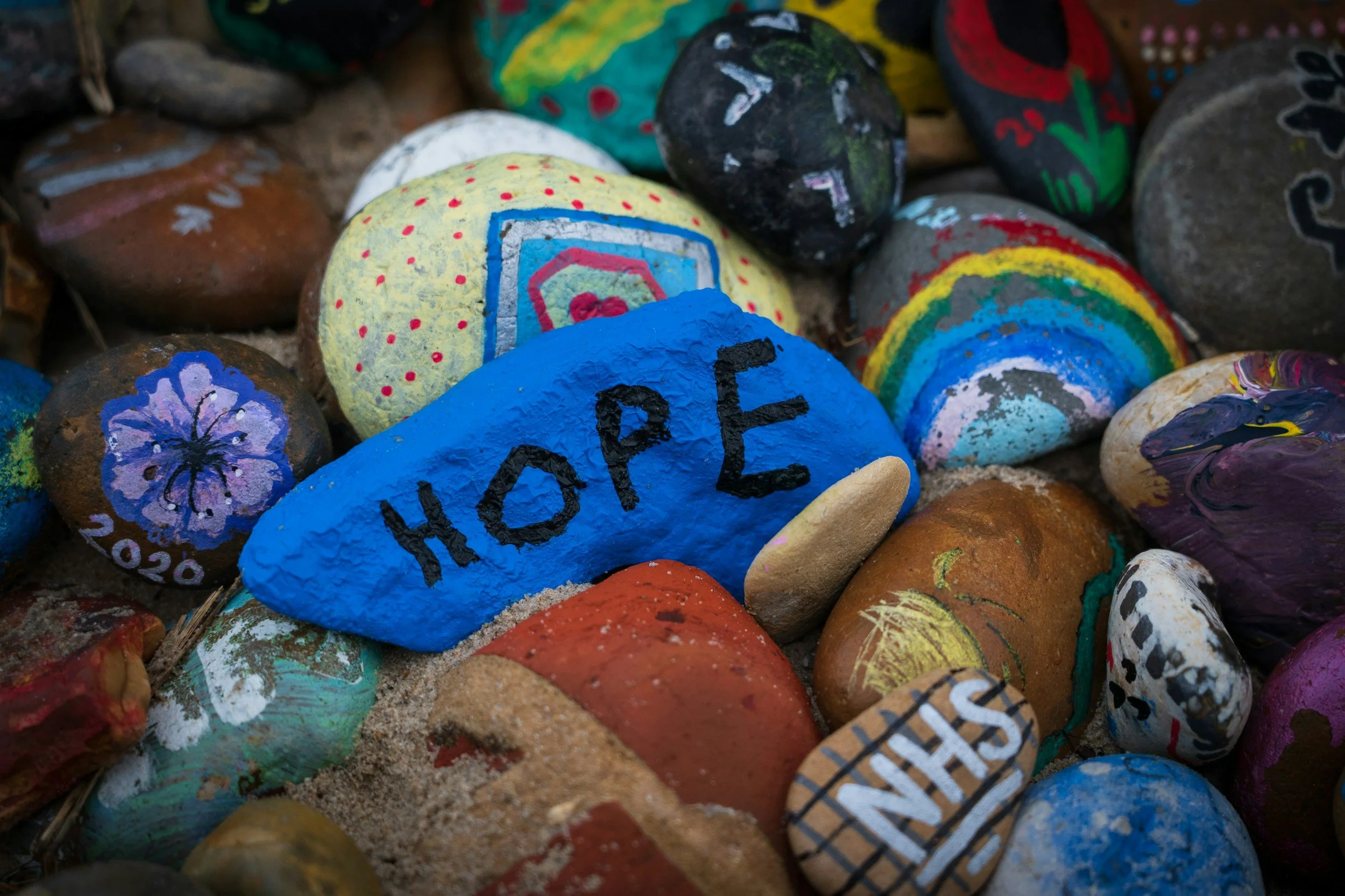The Neurobiology of Hope: How to Reignite It When Everything Feels Hopeless
When life feels unbearably heavy, when losses stack up, the world feels chaotic, or healing feels impossibly slow, hope can feel like a luxury. Yet neuroscience shows that hope is not just wishful thinking or blind optimism. It is a biological process that shapes how our brains regulate emotion, plan for the future, and recover from trauma.
Hope is not something you either have or don’t. Hope something that can be cultivated or rebuilt, through consistent, intentional practice.
The Brain on Hope
Hope activates several interconnected regions of the brain, particularly the prefrontal cortex, anterior cingulate cortex (ACC), and dopaminergic reward system.
Prefrontal Cortex (PFC): Responsible for planning and decision-making, the PFC allows us to imagine future possibilities and strategize ways to reach them. When we feel hopeful, the PFC helps us visualize positive outcomes and make plans toward them.
Anterior Cingulate Cortex (ACC): This region detects errors and monitors progress, keeping us motivated to continue even when things get hard. It helps sustain persistence.
Dopamine System: Dopamine, the “motivation neurotransmitter,” fuels movement toward a goal. When you feel a spark of hope, dopamine is often behind it. This reinforces the belief that effort could lead to reward.
Functional MRI studies show that when people imagine positive future events, these regions “light up,” just as they do when we experience pleasure or reward. In other words, hope gives the brain something to work toward, even before anything changes externally.
What Happens When Hope Fades
When hopelessness sets in, brain activity shifts. The prefrontal cortex and ACC show decreased activation, while stress systems, especially the amygdala and HPA axis (hypothalamic-pituitary-adrenal system), ramp up. This creates a loop: the more we feel trapped or powerless, the more the brain prioritizes threat detection over creative problem-solving. Over time, chronic stress can blunt dopamine activity, leaving us feeling flat, disengaged, and detached from the future.
Trauma survivors often experience this pattern: after repeated experiences of fear or powerlessness, the brain learns to expect disappointment. Hope can feel unsafe, because it requires vulnerability and uncertainty.
How to Cultivate Hope When Everything Feels Hopeless
You can’t force yourself to “just be hopeful,” but you can nurture the brain states that allow hope to grow.
1. Start Small: Restore the Possibility of Change
When life feels overwhelming, the brain needs micro-proof that things can shift.
Set one small, achievable goal daily (like opening the window, texting a friend, or making your bed).
Each completion gives your brain a dopamine boost, reminding your nervous system that effort matters.
2. Co-Regulate with Others
Hope thrives in connection. When you share space with someone calm, safe, and attuned, your nervous system mirrors that safety through neural co-regulation.
Reach out for small, grounding contact; a text, a support group, a therapy session.
You don’t need to force yourself to be “positive”; you just need to feel seen.
3. Visualize the Future (Without Forcing Positivity)
Guided imagery or “future-self” journaling activates the same neural pathways involved in planning and reward.
Try writing: “If something shifted even 5%, what might that look like?”
Focus on plausible hope, not blind optimism.
4. Reengage the Senses
When hope feels inaccessible, sensory experiences can anchor you back into life.
Step outside and name five things you see.
Hold something warm, light a candle, taste something sour.
Focus on moments that bring you back to the present, where your body can begin to calm.
5. Reframe Hopelessness as Fatigue, Not Failure
Sometimes hopelessness is your brain’s way of saying, I’m overwhelmed, not broken.
Rest is part of hope. It gives your prefrontal cortex space to reset.
After rest, curiosity can begin to return, often the first sign that hope is stirring again.
Why Hope Is an Act of Resistance
For trauma survivors and those healing from high-demand religions, reclaiming hope is often radical. Systems built on control or fear teach people that hope belongs to authority figures or divine will. Relearning that you can influence your future, through small, grounded actions, is a profound act of reclaiming agency.
Hope, in this sense, is not denial of pain. Hope is the decision to believe that your nervous system, body, and mind can still adapt. That healing, even slow healing, is still possible.
Hope is not a feeling you wait for; it is a practice you build. Every time you let yourself imagine a softer tomorrow, even for a second, your brain changes in response. Over time, those neural pathways of possibility strengthen; and hope, once fragile, begins to feel like a companion again.
Reach out of you are interested in starting therapy or want to learn more.
📚 Further Reading & Resources
Snyder, C. R. (2002). Hope Theory: Rainbows in the Mind. Psychological Inquiry.
Sharot, T. et al. (2007). How the brain generates optimism. Nature Neuroscience.
Porges, S. W. (2011). The Polyvagal Theory: Neurophysiological Foundations of Emotions, Attachment, Communication, and Self-Regulation.
Disclaimer:
⚠️ The content on this blog is intended for informational and educational purposes ONLY and should NOT be considered a substitute for personal professional mental health care, diagnosis, or treatment. Reading these posts does not establish a therapeutic relationship.
If you are currently in crisis, experiencing thoughts of harming yourself or others, or are in need of immediate support, please call 911 or contact a crisis line such as the Suicide & Crisis Lifeline at 988 (U.S.) or access your local emergency services.
These blog posts are written to explore topics like trauma, religious deconstruction, cults, identity development, and mental wellness in a thoughtful and compassionate way. They may (or may not) resonate deeply, especially for those healing from complex trauma, but they are NOT meant to replace individualized therapy or medical care.
